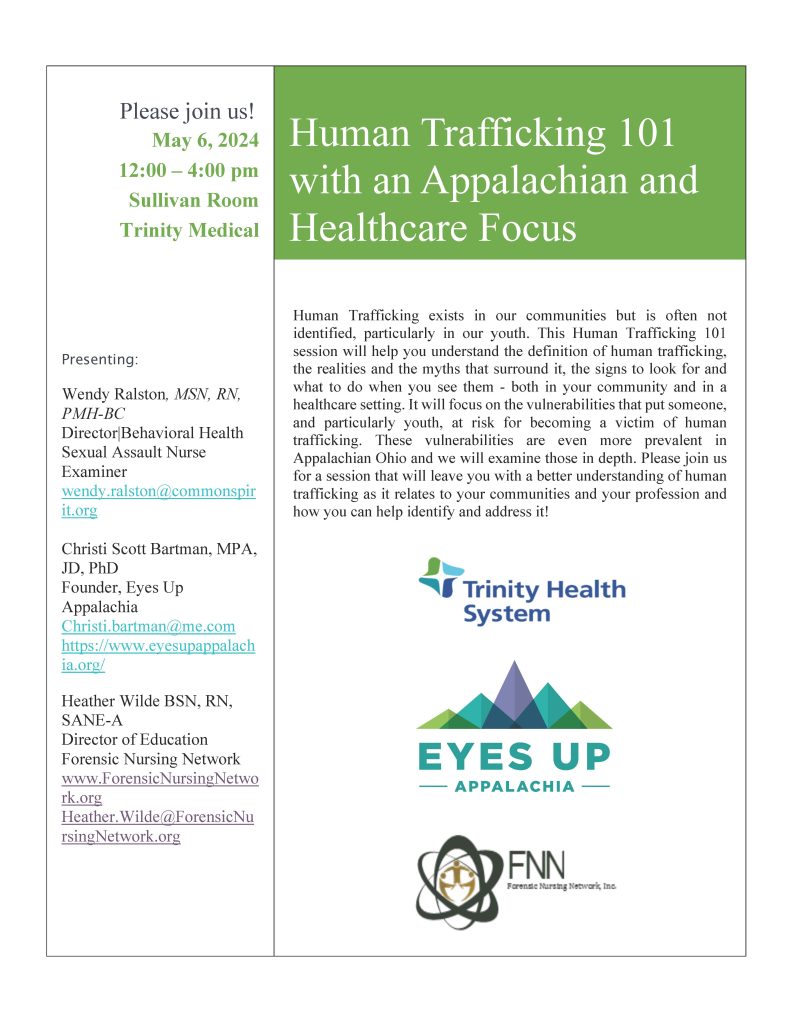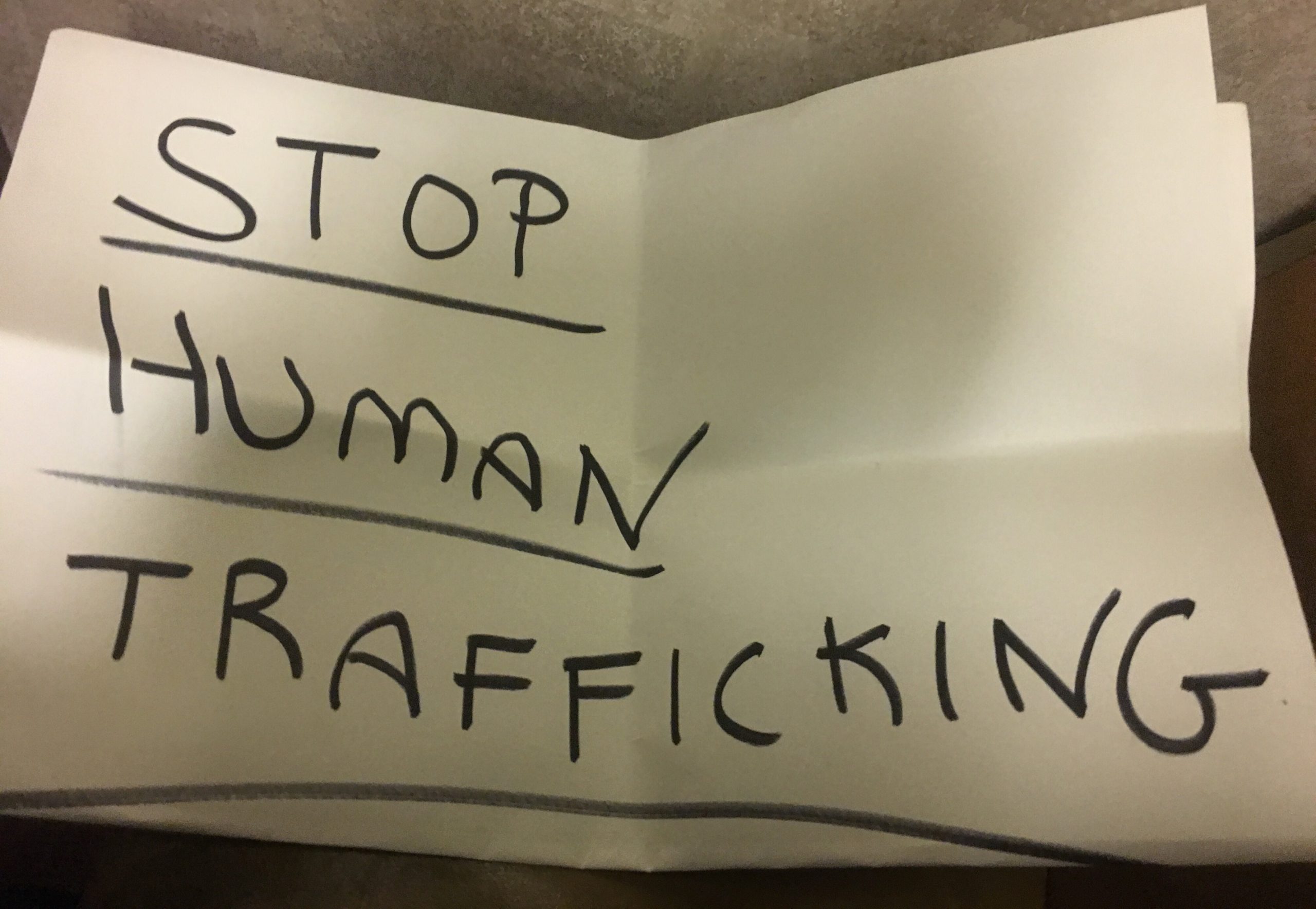On Monday, May 6, 2024, from 12 p.m. to 4 p.m. in the Sullivan Room at Trinity Medical Center West, Trinity Health System, in partnership with Eyes Up Appalachia and Forensic Nursing Network, Inc. (FNN), will host a seminar titled Human Trafficking 101 with an Appalachian and Healthcare Focus. Trinity Medical Center West is located at 4000 Johnson Road in Steubenville, Ohio.
With the purpose of helping healthcare workers understand the definition of human trafficking, the realities and myths that surround it, and the signs to look for and what to do when you see them, the session will focus specifically on Appalachia Ohio and the impact this evil industry is having on our communities.
In preparation for Monday’s seminar, we asked Wendy Ralston, MSN, RN, PMH-BC, Director, Behavioral Health, Sexual Assault Nurse Examiner, Trinity Health System, to answer a few questions about human trafficking and its role in Appalachia Ohio:
Q: Why is this conference important to healthcare professionals?
A: Nearly 88 percent of victims who visited a provider reported most frequently visiting ED or urgent care, followed by PCPs, dentists, OB/GYNs, and Behavioral Health.
Of those who came in contact, nearly 97 percent received no information or resources about human trafficking or victim services.This could be victims’ fear of disclosing and healthcare not understanding or recognizing signs.
The purpose of this conference is to equip physicians, APPs, and staff to identify and assist patients who are victims by identifying patients subject to any violence, provide trauma-informed care to patients, and complete state-mandated reporting requirements if or as applicable.
Q: The conference is being advertised as having an Appalachia focus. How much of a problem is human trafficking in the Ohio Valley?
A: Ohio is ranked number four in the country based on prevalence rates but number five overall in the nation. There are five major interstates connecting this area to surrounding states. Essentially, Ohio is a superhighway for all human trafficking. This is not limited to sex trafficking but labor trafficking as well.
Q: What are three things you hope healthcare professionals take away from the afternoon?
A: I hope we achieve the following: Shifting the culture of Violence Intervention; reducing potential patient harm by early recognition and providing resources to victims; and raising awareness to the hospital’s Human Trafficking Task Force.
Q: To prep those attending, what is one reality about human trafficking that people should know and what is one myth?
A: The reality is human trafficking happens in all demographics and areas, not just overseas. There are several common misconceptions with human trafficking, but the greatest is that victims are always locked up against their will and will reach out for help.
It is important to know that trafficked persons are in plain sight and know their traffickers and have a fear of them and authorities. Often there are complicated relationships or trauma bonds with a trafficker.
Q: Why is human trafficking so hard to identify and define?
A: It is hard due to the lack of education and understanding of human trafficking, Most victims of trafficking don’t attach the term human trafficking to their own victimization. It is hard to identify the unknown.
Q: Anything else you’d like to communicate to our healthcare community?
A: It is our responsibility to treat every patient holistically, giving consideration to the physical, psychological, social, and spiritual wellbeing of individuals. We need to break the chains by identifying the needs of all our patients and look for vulnerabilities that may signify trafficked victims without being judgmental or casting fault.
***
This session is free and open to the public. Further details are in the flyer below:

Thumbnail image courtesy of Wikimedia Commons.

